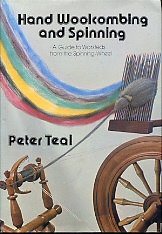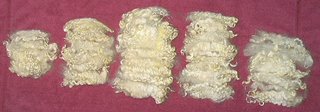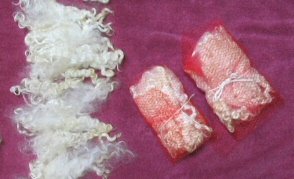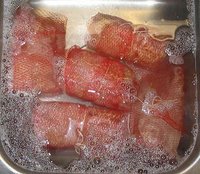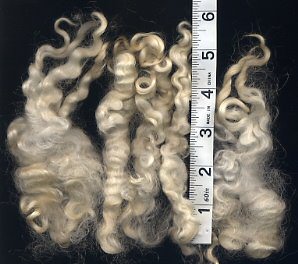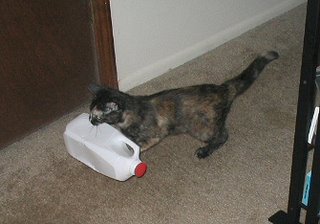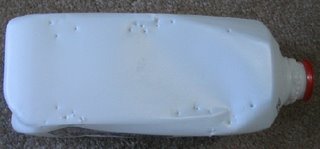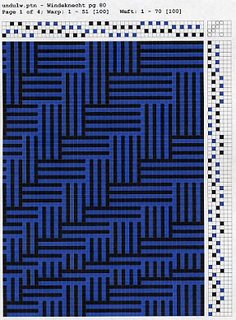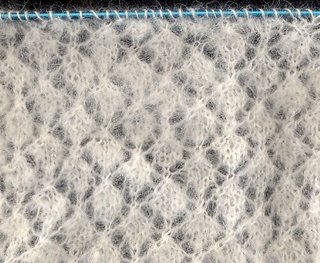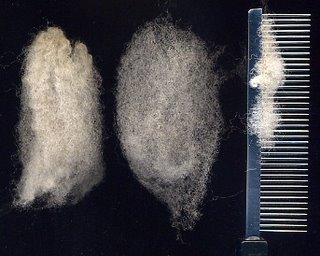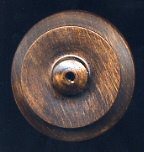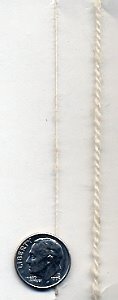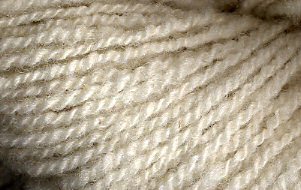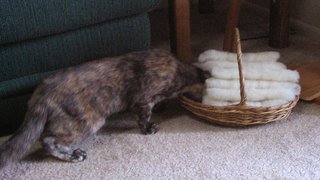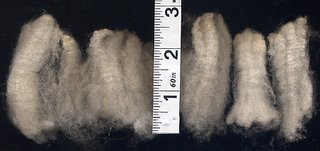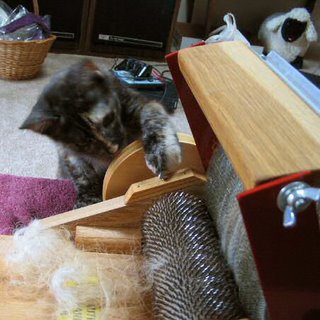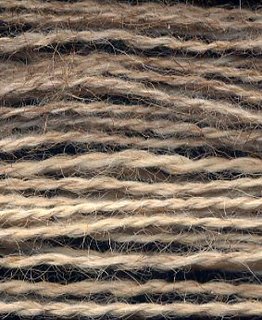Well, since I don't have three hands, I will have to wait until I can get someone to take some photos before I give a progress report on woolcombing my Leicester Longwool.
In the meantime, I have finished weaving my undulating shadow weave. As you may recall, my original plan was to use it for jacket front panels, but during the course of weaving I changed my mind and decided to make it a table runner.
Hemstitching the completed fell before removing it from the loom was no problem.
 I really like to use these blunt, bent point needles for hemstitching. They make it so easy to work the needle through taut fabric. I purchased them about five years ago at the Naked Sheep Yarn Shop in Black Mountain, NC.
I really like to use these blunt, bent point needles for hemstitching. They make it so easy to work the needle through taut fabric. I purchased them about five years ago at the Naked Sheep Yarn Shop in Black Mountain, NC.The other end was a little more challenging to hemstitch since it was after the fact. Cheryl had suggested weighting the fabric, and I did give this some serious consideration.
One cat volunteered to help (the other was too busy taking a nap.)
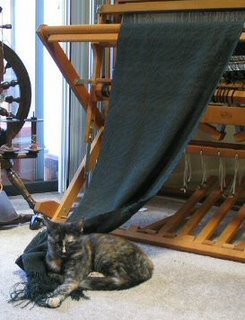
From a distance, the color becomes quite softened. The effect is pretty much lost in the lighting and jpg optimization.
I pulled the fabric over the breast beam and tried to weight it on the floor to give it a little tautness. First I tried using a heavy book as a weight, then a heavy book plus a cast iron iron, and finally a heavy book plus cast iron iron plus cat. None of these proved to be very helpful.
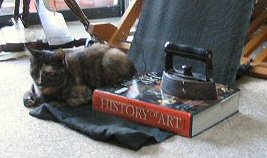 I really couldn't get it taut enough with this system. In the end, I managed the hemstitching rather awkwardly with no weight and then cut the fabric off the loom. All that remains now is to weave in the ends (which are sticking out of the selvedges since I first intended it to be yardage), and then wash and press.
I really couldn't get it taut enough with this system. In the end, I managed the hemstitching rather awkwardly with no weight and then cut the fabric off the loom. All that remains now is to weave in the ends (which are sticking out of the selvedges since I first intended it to be yardage), and then wash and press.
Related Posts:
Shadow Weave Profiles
Undulating Shadow Weave 1 - Weaving
Undulating Shadow Weave 3 - Finishing
Shadow Weave Samples 1 - Begins the series of samples
I pulled the fabric over the breast beam and tried to weight it on the floor to give it a little tautness. First I tried using a heavy book as a weight, then a heavy book plus a cast iron iron, and finally a heavy book plus cast iron iron plus cat. None of these proved to be very helpful.
 I really couldn't get it taut enough with this system. In the end, I managed the hemstitching rather awkwardly with no weight and then cut the fabric off the loom. All that remains now is to weave in the ends (which are sticking out of the selvedges since I first intended it to be yardage), and then wash and press.
I really couldn't get it taut enough with this system. In the end, I managed the hemstitching rather awkwardly with no weight and then cut the fabric off the loom. All that remains now is to weave in the ends (which are sticking out of the selvedges since I first intended it to be yardage), and then wash and press.© 29 Sept. 2006 at http://leighsfiberjournal.blogspot.com
Related Posts:
Shadow Weave Profiles
Undulating Shadow Weave 1 - Weaving
Undulating Shadow Weave 3 - Finishing
Shadow Weave Samples 1 - Begins the series of samples
